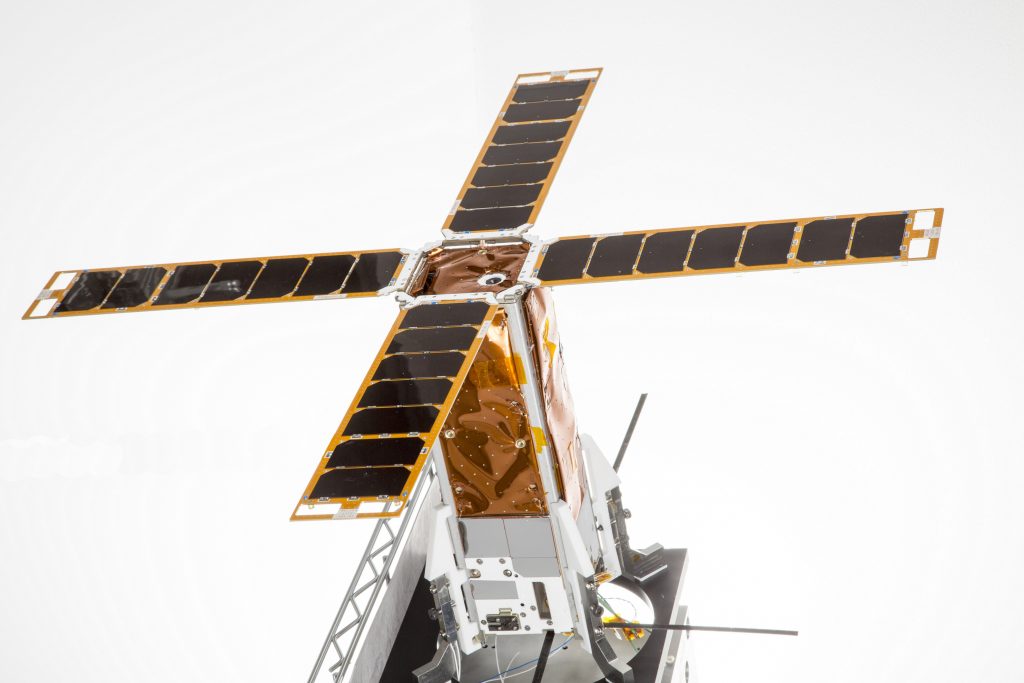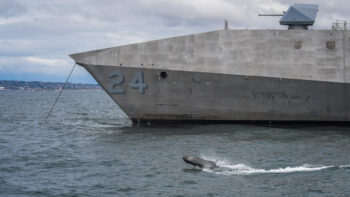
IAI’s NanoSat
TEL AVIV: Israel is planning constellations of nano satellites, built by Israel Aerospace Industries (IAI), that will allow almost continuous coverage of “areas of interest,” which are likely to include Iran, Syria, Lebanon and other countries, according to experts that are not connected in any way to the program. IAI refused to comment.
The first nano satellite was developed by IAI and was launched into space in 2017 as part of a scientific experiment. The 5-kilogram satellite — approximately the size of a milk carton — is equipped with special cameras able to identify various climatic phenomena, and a monitoring system that allows the choice of areas to be imaged and researched.
”We are developing the capability to launch a constellation of Nano satellites. The large number of satellites will give us the capability for a much higher rate of revisits, and actually a continuous monitoring of areas of interest.” says Opher Doron, general manager of IAI’s Space Division.
The nano satellites optical payloads are smaller and the quality of their optical payloads is lower. ”But by using a temporal resolution method this problem is dealt with in a very effective way,” Doron claims. “This method is not directly related to the quality of the sensor but is based on the frequency of revisits over a site.“
The other problem with smaller satellites is color. “Resolution is, of course, very important but we also work on improving the color quality of the images, Doron said. “A good intelligence expert does not need color to extract, the needed intelligence from a satellite image, but when it comes to decision-makers, color is of great importance.”
What underpins all this? It takes a ballistic missile 12 to 15 minutes to travel from Iran to Israel. The earlier a launch is detected and the earlier the trajectory of the missile can be plotted, the better the chances to intercept it far from its designated target.
Today, low orbit Ofeq spy satellites visit “areas of interest” in wide intervals so their optical or radar payloads cannot keep a persistent watch. When it comes to the ballistic missile threat, this is a major problem. Israeli sources say that some 30 minutes are needed from the command to prepare a ballistic missile for launch until it is ready for launch, and this if the protection silos are well equipped. If the enemy is aware of the “visiting” time of the spy satellites over his territory this can be the perfect time to avoid detection of the preparations until the launch itself.

SBIRS (Space Based Infra-Red System) satellite
Once launch occurs, Israel is supposed to get warnings from Lockheed Martin’s Space-Based Infrared System (SBIRS), the US constellation of geosynchronous earth orbit (GEO) satellites. The U.S also deploys an X-band radar system in southern Israel to improve detection of ballistic missiles. This complements the layer supplied by the Green Pine radar, part of the Israeli Arrow missile interceptors.
The first nano satellite was launched from India on the PSLV-C37 launcher with 103 other nano satellites. The plan to build and launch nano satellites first emerged a decade ago. A joint company of IAI and Rafael would undertake the mission. But that plan was deserted.
Yizhak Ben Israel, chairman of the Israeli space agency, served in the Israeli air force and later was in charge of developing Israel’s most advanced and classified military systems at the development directorate in the Defense Ministry. He notes that, although nanosats possess much less exquisite capabilities than SBIRS or other large satellites, “when you use a constellation of such satellites the combined capability can be very effective in missions like locating missile launchers.” The other advantage of nano satellites is their price: “You go from hundreds of million of dollars for a full size imaging satellite to some millions of dollars when it comes to a nano satellite.”
Not directly related to the nano satellite program but part of Israel’s space effort, IAI teamed with British start-up company Effective Space to make a fleet of special satellites weighing roughly 880 pounds that can refuel other satellites in space. IAI signed an agreement for technological and financial cooperation with the smaller company. While Effective Space is headquartered in London, its CEO, Arie Halsband, was general manager of IAI’s space division before starting his own company.
‘The bad day’: DISA’s forthcoming strategy prepares for wartime coms
“It’s great to have internet day to day in peacetime,” said Lt. Gen. Robert Skinner, director of the Defense Information Systems Agency, “but it’s more imperative to have it when bullets are flying.”


























